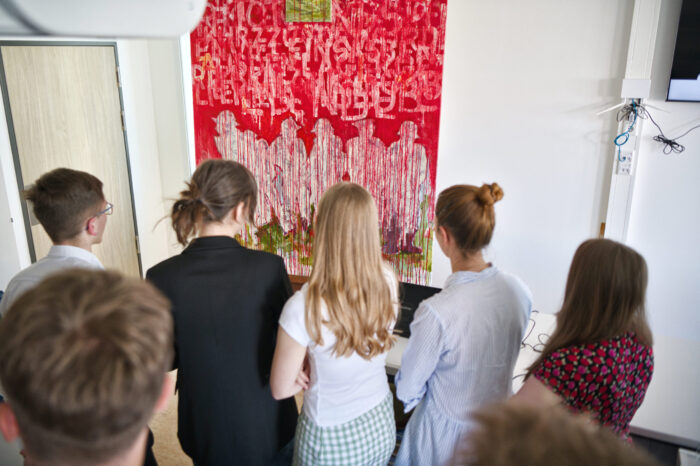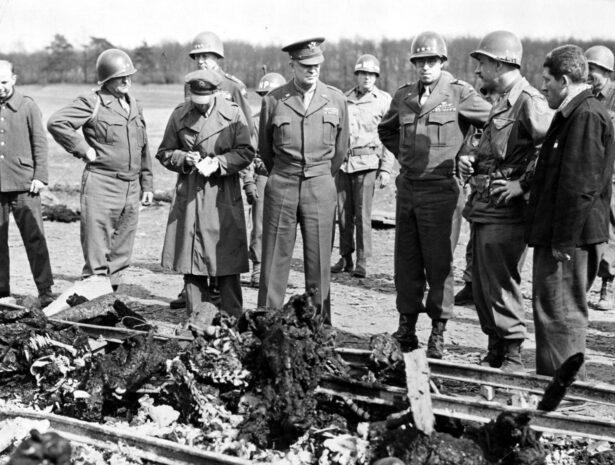#everynamecounts: Ohrdruf – A forgotten concentration camp

During a Week of Remembrance in Thuringia titled “#everynamecounts: Erinnerungslücke* KZ Ohrdruf,” volunteers are digitizing documents containing a total of 20,000 names of prisoners from Ohrdruf concentration camp. The volunteers are helping to build the world’s largest digital memorial to the victims of Nazi persecution – and remembering the victims in their region at the same time. To launch the week of action, students from a 9th grade class dedicated a whole day to the campaign.
“There is a huge gap in our collective memory with regard to the S III sub-camp in Ohrdruf, despite the fact that so many people were killed there and that General Eisenhower (later President of the U.S.A.) mentioned the camp in his memoirs,” explained Thuringia’s Minister of Education, Youth and Sports Helmut Holter at the launch of the project week on May 30. He and some of his colleagues – including Onno Eckert, District Administrator of Gotha district – joined students from class 9.1 of the Arnoldischule in Gotha to work on lists from the concentration camp on the crowdsourcing platform #everynamecounts.

Thuringia’s Minister of Education Helmut Holter and Evan Vogel (15) index a dataset for #everynamecounts. Photo: Susanne Finne-Hoerr
* The German title is a play on the word “Erinnerungslücke,” which is normally translated as memory gap but can also refer to a gap in remembrance.
Week of Remembrance in Thuringia: Anyone can take part
Over 300 lists of names containing 20,000 names of prisoners from Ohrdruf concentration camp have been made available for digitization on the #everynamecounts platform. Schools, clubs, youth centers, and businesses are all invited to participate. Students in particular have much to benefit from this modern, digital educational experience that encourages them to reflect on exclusion in society today. Art workshops run by artists and unconventional activities in public spaces round off the week of remembrance.


Active Remembrance
During the project day at the Arnoldischule in Gotha, the students learned about Nazi persecution in several very different ways. They participated in an anti-discrimination workshop and digitized documents for #everynamecounts. Artist Manon Grashorn invited the students to stand back and reflect and encouraged them to use their senses to engage with the subject by looking at a painting.
Wide-Ranging Remembrance Project in Thuringia
By the end of the first few days of the crowdsourcing campaign in Thuringia, the participants had already digitized almost half of the lists of names from the Ohrdruf concentration camp. The Thuringian Week of Remembrance is part of a remembrance project titled “Deutsche Erinnerungslücke KZ Ohrdruf” (German Memory/Remembrance Gap Ohrdruf Concentration Camp). It is the result of a partnership between the Friedenstein Castle Gotha Foundation, the Arolsen Archives, and the Buchenwald and Mittelbau-Dora Memorials Foundation. The campaign is funded by the Federal Government Commissioner for Culture and the Media and by the Thuringian Ministry of Education, Youth, and Sport.
» The week of remembrance promotes togetherness in Thuringia. We are working in partnership with the Arolsen Archives to introduce civil society to historical sources; we are also thinking about new forms of memory culture together. «
Dr. Christoph Mauny, Project Manager of “#everynamecounts: Erinnerungslücke KZ Ohrdruf” and Communications Officer of the Friedenstein Castle Gotha Foundation


